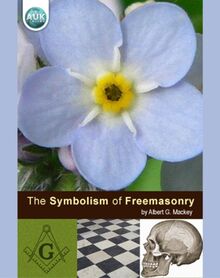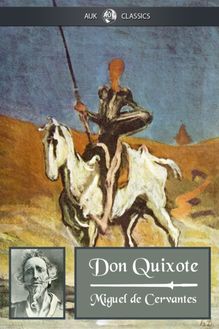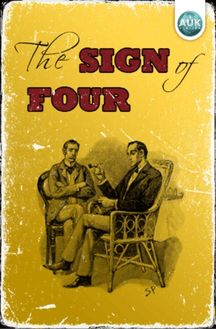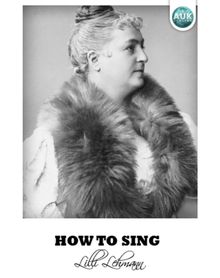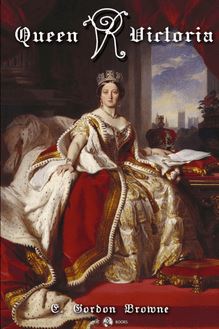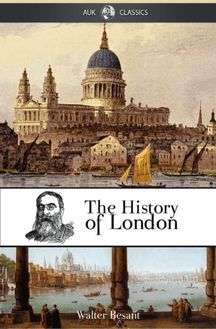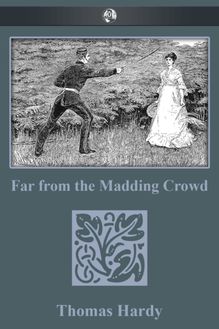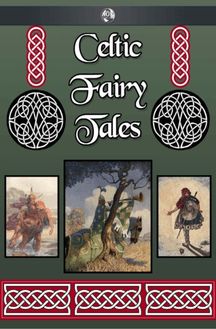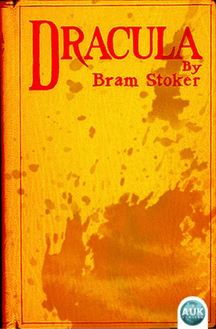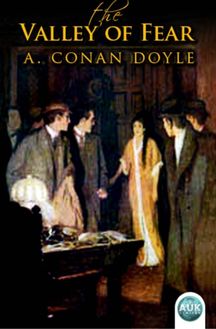-
 Univers
Univers
-
 Ebooks
Ebooks
-
 Livres audio
Livres audio
-
 Presse
Presse
-
 Podcasts
Podcasts
-
 BD
BD
-
 Documents
Documents
-
- Cours
- Révisions
- Ressources pédagogiques
- Sciences de l’éducation
- Manuels scolaires
- Langues
- Travaux de classe
- Annales de BEP
- Etudes supérieures
- Maternelle et primaire
- Fiches de lecture
- Orientation scolaire
- Méthodologie
- Corrigés de devoir
- Annales d’examens et concours
- Annales du bac
- Annales du brevet
- Rapports de stage
La lecture à portée de main
Vous pourrez modifier la taille du texte de cet ouvrage
Découvre YouScribe en t'inscrivant gratuitement
Je m'inscrisDécouvre YouScribe en t'inscrivant gratuitement
Je m'inscrisEn savoir plus
Vous pourrez modifier la taille du texte de cet ouvrage
En savoir plus

Description
Sujets
Informations
| Publié par | Andrews UK |
| Date de parution | 12 août 2010 |
| Nombre de lectures | 0 |
| EAN13 | 9781849891844 |
| Langue | English |
| Poids de l'ouvrage | 1 Mo |
Informations légales : prix de location à la page 0,0224€. Cette information est donnée uniquement à titre indicatif conformément à la législation en vigueur.
Extrait
Title Page
THE HISTORY OF LONDON
by
Walter Besant
Publisher Information
Digital Edition converted and published by
Andrews UK Limited 2010
www.andrewsuk.com
This Digital Edition, including all typography, formatting and layout is copyright 2010 Andrews UK. This book is sold subject to the condition that it shall not, by way of trade or otherwise, be lent, resold, hired out or otherwise circulated without the publisher’s prior written consent in any form of binding or cover other than that in which it is published, and without a similar condition being imposed on the subsequent purchaser.
THE NEW HOUSES OF PARL IAMENT:
DESIGNED BY BARRY, OPENED 1852.
The Foundation of London
PART I
‘In the year 1108 b.c. , Brutus, a descendant of Æneas, who was the son of Venus, came to England with his companions, after the taking of Troy, and founded the City of Troynovant, which is now called London. After a thousand years, during which the City grew and flourished exceedingly, one Lud became its king. He built walls and towers, and, among other things, the famous gate whose name still survives in the street called Ludgate. King Lud was succeeded by his brother Cassivelaunus, in whose time happened the invasion of the Romans under Julius Cæsar. Troynovant, or London, then became a Roman city. It was newly fortified by Helena, mother of Constantine the Great.’
This is the legend invented or copied by Geoffrey of Monmouth, and continued to be copied, and perhaps believed, almost to the present day. Having paid this tribute to old tradition, let us relate the true early history of the City, as it can be recovered from such documents as remain, from discoveries made in excavation, from fragments of architecture, and from the lie of the ground. The testimony derived from the lie of the ground is more important than any other, for several reasons. First, an historical document may be false, or inexact; for instance, the invention of a Brutus, son of Æneas, is false and absurd on the face of it. Or a document may be wrongly interpreted. Thus, a fragment of architecture may through ignorance be ascribed to the Roman, when it belongs to the Norman, period - one needs to be a profound student of architecture before an opinion of value can be pronounced upon the age of any monument: or it may be taken to mean something quite apart from the truth, as if a bastion of the old Roman fort, such as has been discovered on Cornhill, should be taken for part of the Roman wall. But the lie of the ground cannot deceive, and, in competent hands, cannot well be misunderstood. If we know the course of streams, the height and position of hills, the run of valleys, the site of marshes, the former extent of forests, the safety of harbours, the existence of fords, we have in our hands a guide-book to history. We can then understand why towns were built in certain positions, why trade sprang up, why invading armies landed at certain places, what course was taken by armies, and why battles have been fought on certain spots. For these things are not the result of chance, they are necessitated by the geographical position of the place, and by the lie of the ground. Why, for instance, is Dover one of the oldest towns in the country? Because it is the nearest landing ground for the continent, and because its hill forms a natural fortress for protecting that landing ground. Why was there a Roman station at Portsmouth? On account of the great and landlocked harbour. Why is Durham an ancient city? Because the steep hill made it almost impregnable. Why is Chester so called? Because it was from very ancient times a fort, or stationary camp (L. castra ), against the wild Welsh.
EARLY BRITISH POTTERY
Let us consider this question as regards London. Look at the map called ‘Roman London’. You will there see flowing into the river Thames two little streams, one called Walbrook, and the other called the Fleet River. You will see a steep slope, or cliff, indicated along the river side. Anciently, before any buildings stood along the bank, this cliff, about 30 feet high, rose over an immense marsh which covered all the ground on the south, the east, and the west. The cliff receded from the river on the east and on the west at this point: on either side of the Walbrook it rose out of the marsh at the very edge of the river at high tide. There was thus a double hill, one on the east with the Walbrook on one side of it, the Thames on a second side, and a marsh on a third side, and the Fleet River on the west. It was thus bounded on east, south, and west, by streams. On the north was a wild moor (hence the name Moorfields) and beyond the moor stretched away northwards a vast forest, afterwards called the Middlesex forest. This forest covered, indeed, the greater part of the island, save where marshes and stagnant lakes lay extended, the haunt of countless wild birds. You may see portions and fragments of this forest even now; some of it lies in Ken Wood, Hampstead; some in the last bit left of Hainault Forest; some at Epping.
The river Thames ran through this marsh. It was then much broader than at present, because there were no banks or quays to keep it within limits: at high tide it overflowed the whole of the marsh and lay in an immense lake, bounded on the north by this low cliff of clay, and on the south by the rising ground of what we now call the Surrey Hills, which begin between Kennington and Clapham, as is shown by the name of Clapham Rise. In this marsh were a few low islets, always above water save at very high tides. The memory of these islands is preserved in the names ending with ea or ey , as Chelsea, Battersea, Bermondsey. And Westminster Abbey was built upon the Isle of Thorns or Thorney. The marsh, south of the river, remained a marsh, undrained and neglected for many centuries. Almost within the memory of living men Southwark contained stagnant ponds, while Bermondsey is still flooded when the tide is higher than is customary.
PART II
On these low hillocks marked on the map London was first founded. The site had many advantages: it was raised above the malarious marsh, it overlooked the river, which here was at its narrowest, it was protected by two other streams and by the steepness of the cliff, and it was over the little port formed by the fall of one stream into the river. Here, on the western hill, the Britons formed their first settlement; there were as yet no ships on the silent river where they fished; there was no ferry, no bridge, no communication with the outer world; the woods provided the first Londoners with game and skins; the river gave them fish; they lived in round huts formed of clay and branches with thatched roofs. If you desire to understand how the Britons fortified themselves, you may see an excellent example not very far from London. It is the place called St. George’s Hill, near Weybridge. They wanted a hill - the steeper the side the better: they made it steeper by entrenching it; they sometimes surrounded it with a high earthwork and sometimes with a stockade: the great thing being to put the assailing force under the disadvantage of having to climb. The three river sides of the London fort presented a perpendicular cliff surmounted by a stockade, the other side, on which lay the forest, probably had an earthwork also surmounted by a stockade. There were no buildings and there was no trade; the people belonged to a tribe and had to go out and fight when war was carried on with another tribe.
The fort was called Llyn-din - the Lake Fort. When the Romans came they could not pronounce the word Llyn - Thlin in the British way - and called it Lon - hence their word Londinium. Presently adventurous merchants from Gaul pushed across to Dover, and sailed along the coast of Kent past Sandwich and through the open channel which then separated the island of Thanet from the main land, into the broad Thames, and, sailing up with the tide, dropped anchor off the fishing villages which lay along the river and began to trade. What did they offer? What Captain Cook offered the Polynesians: weapons, clothes, adornments. What did they take away? Skins and slaves at first; skins and slaves, and tin and iron, after the country became better known and its resources were understood. The taste for trading once acquired rapidly grows; it is a delightful thing to exchange what you do not want for what you do want, and it is so very easy to extend one’s wants. So that when the Romans first saw London it was already a flourishing town with a great concourse of merchants.
How long a period elapsed between the foundation of London and the arrival of the Romans? How long between the foundation and the beginnings of trade? It is quite impossible even to guess. When Cæsar landed Gauls and Belgians were already here before him. As for the Britons themselves they were Celts, as were the Gauls and the Belgians, but of what is called the Brythonic branch, represented in speech by the Welsh, Breton and Cornish languages (the last is now extinct). There were also lingering among them the surviving families of an earlier and a conquered race, perhaps Basques or Finns. When the country was conquered by the Celts we do not know. Nor is there any record at all of the people they found here unless the caves, full of the bones which they gnawed and cut in two for the marrow, were the homes of these earlier occupants.
When the Romans came they found the town prosperous. That is all we know. What the town was like we do not know. It is, however, probable that the requirements of trade had already necessitated some form of embankment and some kind of quay; also, if trade were of long standing, some improvement in the huts, the manner of living, the wants, and
-
 Univers
Univers
-
 Ebooks
Ebooks
-
 Livres audio
Livres audio
-
 Presse
Presse
-
 Podcasts
Podcasts
-
 BD
BD
-
 Documents
Documents
-
Jeunesse
-
Littérature
-
Ressources professionnelles
-
Santé et bien-être
-
Savoirs
-
Education
-
Loisirs et hobbies
-
Art, musique et cinéma
-
Actualité et débat de société
-
Jeunesse
-
Littérature
-
Ressources professionnelles
-
Santé et bien-être
-
Savoirs
-
Education
-
Loisirs et hobbies
-
Art, musique et cinéma
-
Actualité et débat de société
-
Actualités
-
Lifestyle
-
Presse jeunesse
-
Presse professionnelle
-
Pratique
-
Presse sportive
-
Presse internationale
-
Culture & Médias
-
Action et Aventures
-
Science-fiction et Fantasy
-
Société
-
Jeunesse
-
Littérature
-
Ressources professionnelles
-
Santé et bien-être
-
Savoirs
-
Education
-
Loisirs et hobbies
-
Art, musique et cinéma
-
Actualité et débat de société
- Cours
- Révisions
- Ressources pédagogiques
- Sciences de l’éducation
- Manuels scolaires
- Langues
- Travaux de classe
- Annales de BEP
- Etudes supérieures
- Maternelle et primaire
- Fiches de lecture
- Orientation scolaire
- Méthodologie
- Corrigés de devoir
- Annales d’examens et concours
- Annales du bac
- Annales du brevet
- Rapports de stage


